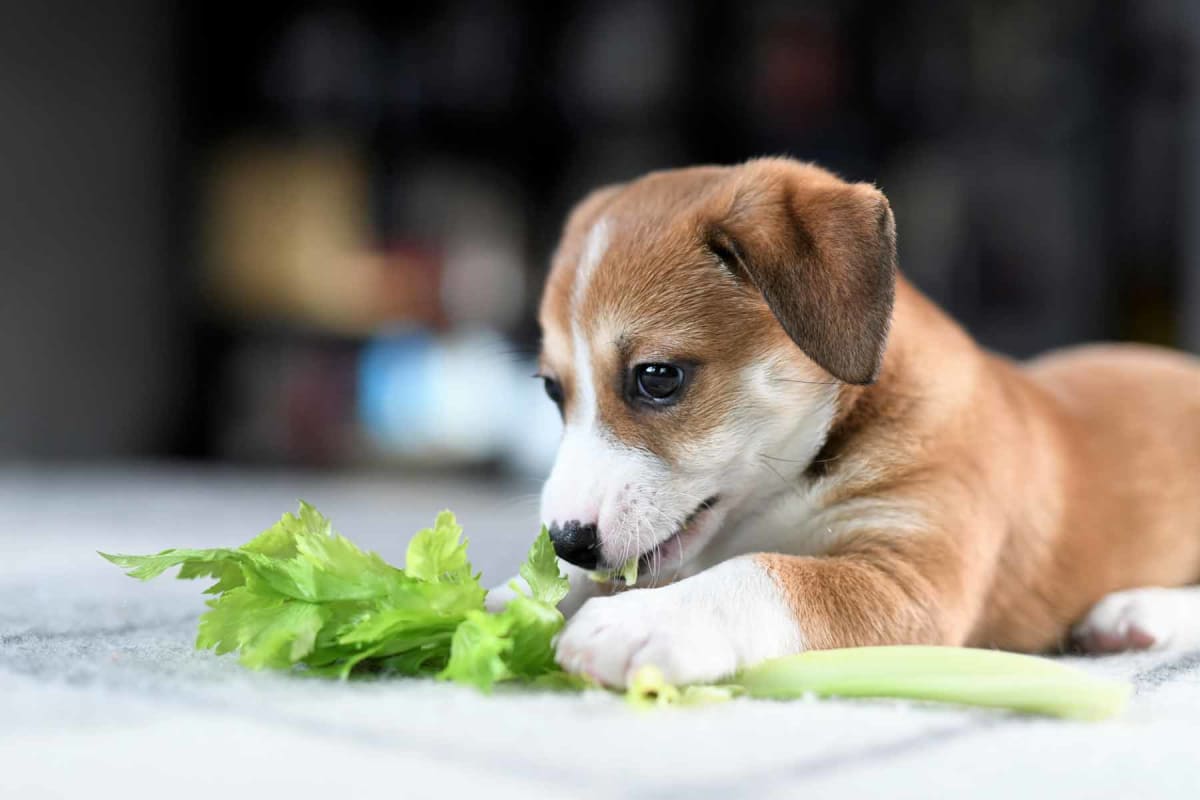
Can dogs eat celery?
Can dogs eat celery?
Can dogs have celery?
Good news! Dogs can eat celery as long as it's prepared correctly and fed in moderation. This crunchy, low-calorie vegetable is generally safe for canine consumption and can even provide some health benefits. However, there are important considerations to keep in mind to ensure your furry friend enjoys celery safely.
Can puppies eat celery?
Puppies can eat celery, but extra caution is needed. Raw celery can pose a choking hazard, especially for small puppies. Always cut celery into small, bite-sized pieces appropriate for your puppy's size. Introduce celery slowly into their diet to monitor for any digestive upset.
Is celery good for dogs?
Celery is more than just a dog-safe, crunchy treat. It's loaded with vitamins and minerals that can support your dog's health. Key nutritional highlights include:
Key nutritional highlights:
Low in calories
High in fiber
Rich in vitamins A, C, and K
Supports hydration
Can help reduce inflammation
Contains beneficial minerals
When is celery bad for dogs?
While celery is generally safe, moderation is crucial, and there are some risks to consider. Celery can pose a choking hazard if it's not cut up small enough, the stringy texture might be challenging for some dogs to digest, and too much celery can lead to an array of potential problems:
Celery is a diuretic, causing increased urination if consumed in large amounts.
The high fiber content can cause gastrointestinal upset, including bloating, gas, diarrhea, and vomiting if eaten in excess.
Consuming large amounts can lead to increased blood pressure because of celery's high sodium content.
It may interfere with iodine metabolism when eaten in large quantities, potentially increasing the risk of hypothyroidism.
Celery leaves might contain pesticides if not organic or thoroughly washed.
How to safely feed celery to your dog
Preparation is key when introducing celery to your dog's diet. Follow these guidelines to safely introduce celery to your dog's diet:
Thoroughly wash the celery to remove any pesticides, especially if it's not organic.
Cut celery into small, bite-sized pieces to prevent choking.
Consider removing the leaves if using non-organic celery, as they may contain more pesticides.
Introduce celery slowly into your dog's diet to monitor for any adverse reactions.
Serve celery raw for a crunchy treat or lightly steamed for easier digestion.
How much celery can a dog eat?
While celery is generally safe, it should only be an occasional treat and not a replacement for a balanced diet. For small dogs, one or two small pieces of celery is plenty.
Medium or large dogs can have slightly more, but celery (and any other treats) should never exceed 10% of your dog's daily food intake. When in doubt, consult your veterinarian about appropriate portion sizes.
Signs to watch out for
After giving your dog celery, watch for any unusual reactions. Most dogs will digest it without issues, but some might experience:
Mild stomach upset
Increased gas
Loose stools
Decreased appetite
Loss of energy
Itchy skin
Sneezing
If these symptoms persist or seem severe, contact your veterinarian immediately.

Other safe foods
Besides celery, there are many other human foods that are safe and healthy for dogs, including:
Fruits: Apples (without seeds and core), blueberries, watermelon (seedless), bananas
Vegetables: Carrots, green beans, sweet potatoes, pumpkin
Proteins: Cooked chicken, turkey, eggs (all unseasoned)
Other options: Cooked white rice, peanut butter (xylitol-free)
Before making significant changes to your dog's diet, always consult with your veterinarian. They can provide personalized advice based on your dog's specific health needs, age, and dietary requirements.